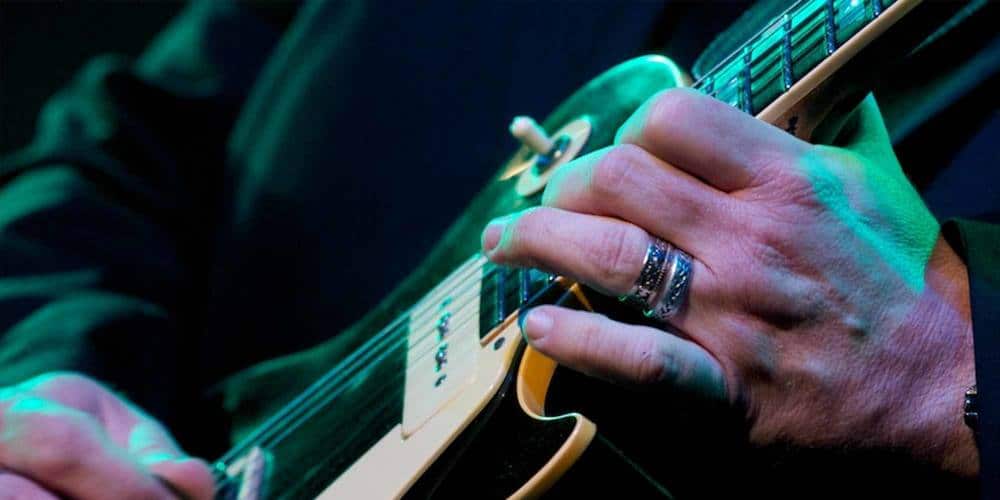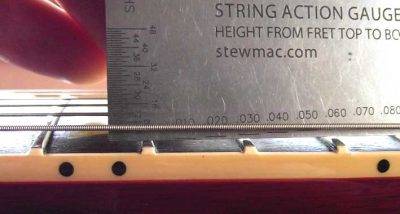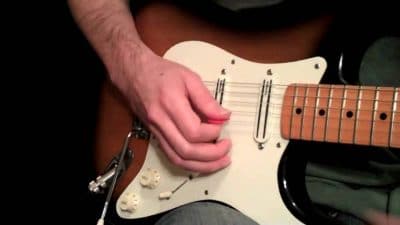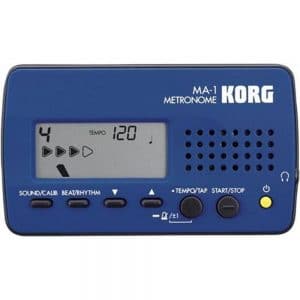7 Ways to Build Speed on the Guitar

Building speed is an important part of improving your overall guitar technique. Even if you don’t want to shred, being able to play faster can help your accuracy and timing for more complicated parts you might need to play.
Many of us who primarily play electric guitar (myself included) think of speed as an important part of playing and writing music in a certain style. For example, if you want to play heavy metal leads or lots of fast guitar solos, speed is probably an important part of that.
Whatever the reason, if you want to build speed, here are some techniques and tips I’ve personally made use of over the years that have helped me add speed and accuracy to my playing.
1. Buy the right guitar
When playing fast, having a guitar with low action is extremely important. When the action on your guitar is too high, it becomes difficult to keep your movements small enough to build a good amount of speed.
There’s a certain point where lower action becomes a subjective element of the guitar, but get a guitar with action that’s low enough that you can press the frets without tensing up too much. Staying relaxed is an important part of playing with speed and accurately.
Some of the best acoustic guitars have great action right out of the box, but if they don’t, definitely bring your guitar to a guitar tech to have the action lowered to a comfortable level.
For electric guitars, it’s easier to find options with low action. Even beginner electric guitars have relatively good action compared to their acoustic counterparts.
Another thing you’ll want to keep in mind when looking for a guitar is that thinner necks are usually easier to play fast on. It’s easier to adjust your thumb position for improved reach during sweep picking or alternate picking parts that require you to jump around a lot.
Action and neck thickness are subjective in terms of what is better overall, but for speed, I’ve noticed that low action and thin necks are optimal.
2. Use the right techniques
If you’re looking to play faster, it’s important to understand the techniques involved.
Here are some of the techniques I’ve spent lots of time practicing that have helped with my speed. With each technique, I’ve embedded a video lesson explaining the basics of it in case you want to get a jump-start on learning them.
- Alternate picking – Many new guitar players have a habit of only picking downward. Alternate picking is, as the name explains, where you alternate your picking between up and down motions. So after picking the first note with a downward motion, you pick the second note with an upward motion, third note down, and so on.
- Sweep picking – Another technique that’s popular among guitarists wanting to play fast is sweep picking. This technique involves playing individual notes on consecutive strings while maintaining a “sweeping” motion with your pick. Essentially, both hands are moving up and down the strings to produce a fluid, fast sound. This technique is commonly used to play arpeggios.
- Economy picking – This technique is my personal favorite. Economy picking is essentially a combination of alternate picking and sweep picking that eliminates the need for outside picking (a common occurrence in alternate picking where you need to hop over a string, such as when you pick down on one string, then up on the one below it, for example). More specifically:
- When picking on one string, you use alternate picking.
- When changing strings, sweep picking is used in place of outside picking.
Completion of these techniques, you’ll be able to more easily build speed and clarity in your playing, and a clean performance will make things much easier for your mixing and mastering engineer when you go to record an album.
3. Focus obsessively on small details
Movements
Keeping your movements small is essential to building speed on the guitar. This goes for both acoustic and electric guitar players.
With your fretting hand, pay attention to how high you’re lifting your fingers off of the fretboard when running through the notes. Try and keep your fingers as close to the fretboard as possible at all times.
With your picking hand, make sure you’re making use of the techniques that result in the least amount of movement in all cases. If you’re alternate picking, make sure you aren’t moving the pick too far away from the strings between strokes. When sweep picking, pay attention to how far away you move the pick from the strings when you arrive at the top or bottom of your sweep motion.
Muting
Proper muting is one of the most important parts of playing fast guitar – especially on electric guitars with lots of distortion.
Muting involves the use of both your fretting hand and your picking hand.
With your fretting hand, during alternate or economy picking, use your index finger to mute any strings under that of the notes you’re playing. You can achieve this by making sure the fleshy part of your index finger is always touching the strings under the one you’re playing on.
During sweep picking, muting with your fretting hand is a bit more difficult and will require you to look at your sweeping pattern. In short, when lifting your fingers off of the fretboard, make sure they’re still lightly touching the string you just played to keep it from ringing out under the notes that follow.
With your picking hand, in all cases, use your palm to mute the strings above the string you’re currently playing on by resting it near the bridge. This applies to all picking techniques.
4. Use a metronome
Using a metronome is vital to improving speed on the guitar. It allows you to slowly increase your speed as you are able, and is a great way to track your progress.
When using a metronome, make sure you’re practicing patterns that involve multiple sets of notes per click. Experiment with 3, 4, and 6 notes per click to make yourself comfortable with the differences.
If you don’t have a metronome, Google made one that you can use for free if you search the word “metronome”.
5. Make sure it’s clean – play slowly first
To get your technique right, it’s important to start slow. Put the metronome on a low tempo (and I mean low – like 40-50 BPM) and practice your patterns or solos with an intense focus on your technique. This helps you pay close attention to things like muting, pick position, and timing, and will help develop your muscle memory for the part you’re working on.
Playing slowly also helps you establish synchronization between your picking and fretting hands, which is important for a clean sound.
6. Moving up in speed
When your playing becomes comfortable and you’re able to play the part while feeling relaxed, it’s time to move the metronome up.
Playing extremely slow is important for getting your timing, technique, and muscle memory in place, but once that’s all there, you want to play past your comfort zone. Set the metronome to a speed that makes the muscles in your forearm tense up a bit, and push through it.
Don’t worry too much about clean playing at this stage. Similar when you lift weights to build muscle, the focus on speeding up here is to push yourself past your comfort zone until you begin to adapt to the new speed.
Once you’ve adapted to the new speed, increase the tempo again.
I usually increase my speed in increments of 5bpm. When I can comfortably play the part multiple times through without any errors, I increase it again.
7. Analyze your playing
Sometimes, you have a part you’re working on, and something is off that isn’t easy to identify. This happened to me a lot during my sweep picking practice – I’d play through the sweep, but one or two notes would have some sort of buzz or ringing under them. At a higher speed, it was harder to identify what the exact problem was.
To address these problems, it’s important to periodically take videos of your playing, and watch your performances closely to identify exactly where the issue is. When you have an idea of where the problem might be, slow your playing down (with the metronome) and conduct a deep analysis of your technique. Play the part slower, and build back up to speed until you’re able to identify and fix the issue. Do this a few times until it’s is gone.
Conclusion
Improving your speed on the guitar can open up a variety of options as far as the songs you’ll be able to play and the types of parts you can write. Playing fast is going to take lots of practice, but with the proper techniques and good practice habits, you’ll find yourself playing fast and clean sooner than you thought possible.
[amazon_link asins=’B07FCRPTHX,147062981X,0793509629,B01F6VT3LO,0989979830,0692280421,B077ZH6QJP,1423477898′ template=’ProductCarousel’ store=’maasc-20′ marketplace=’US’ link_id=’dd773276-f9c5-11e8-bef1-6d19d48c9054′]
Discover more from Making A Scene!
Subscribe to get the latest posts sent to your email.

















































